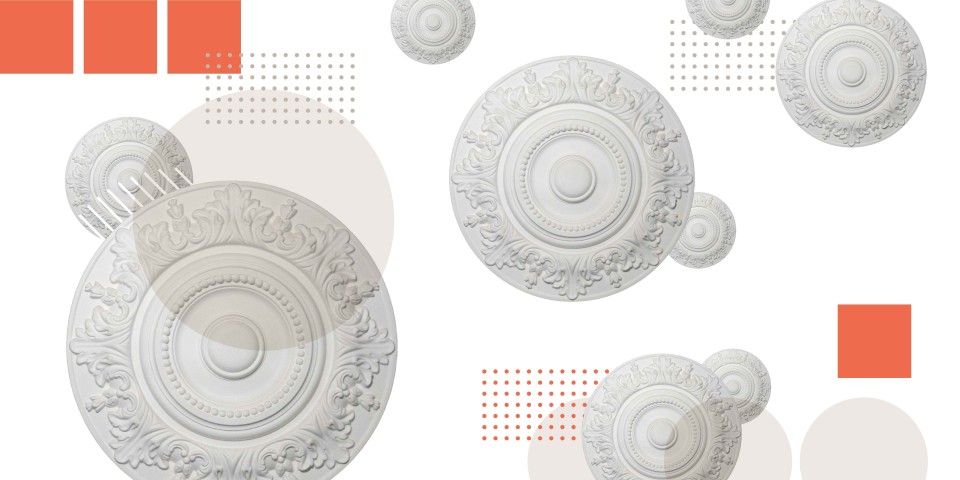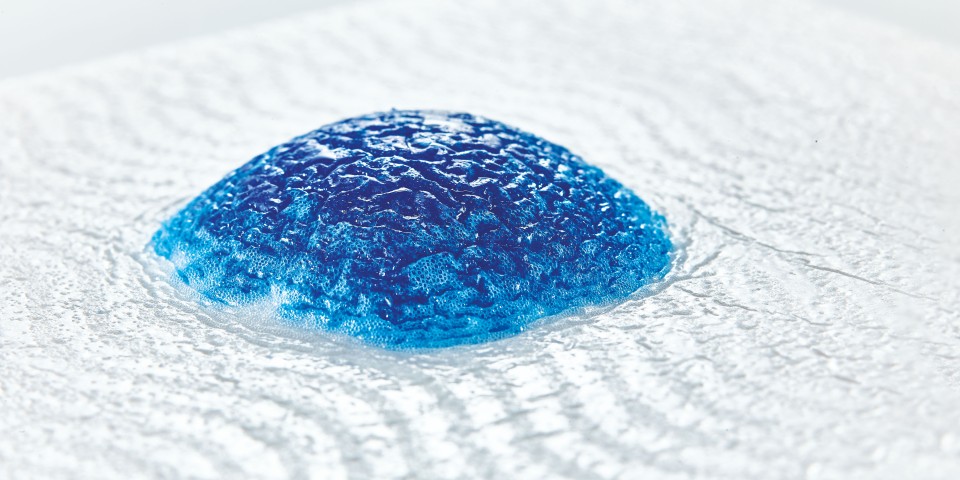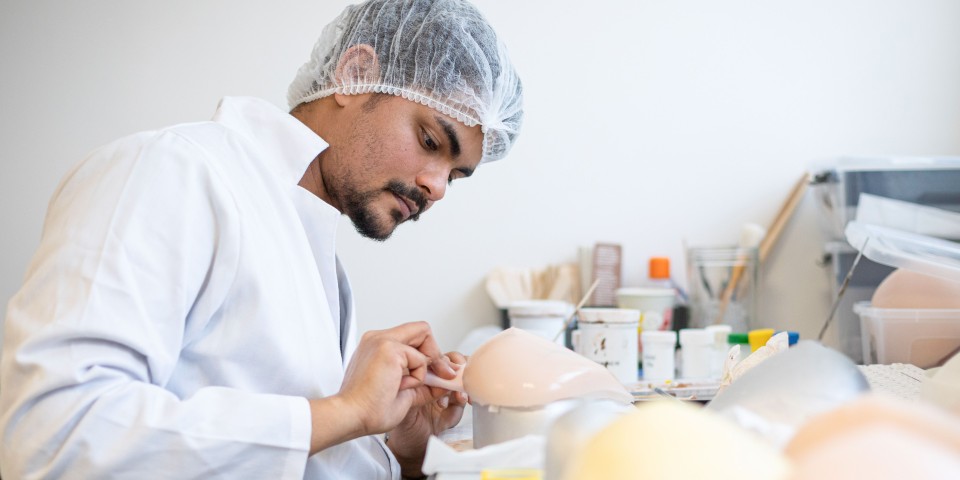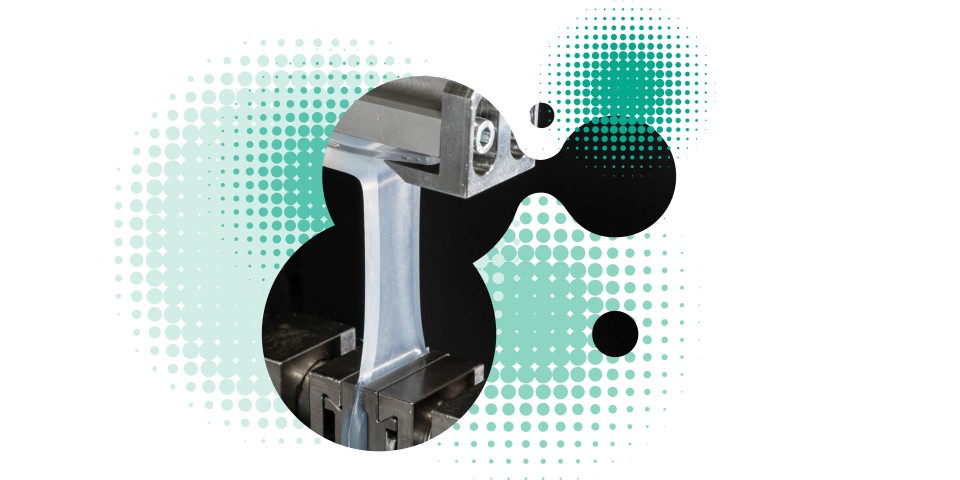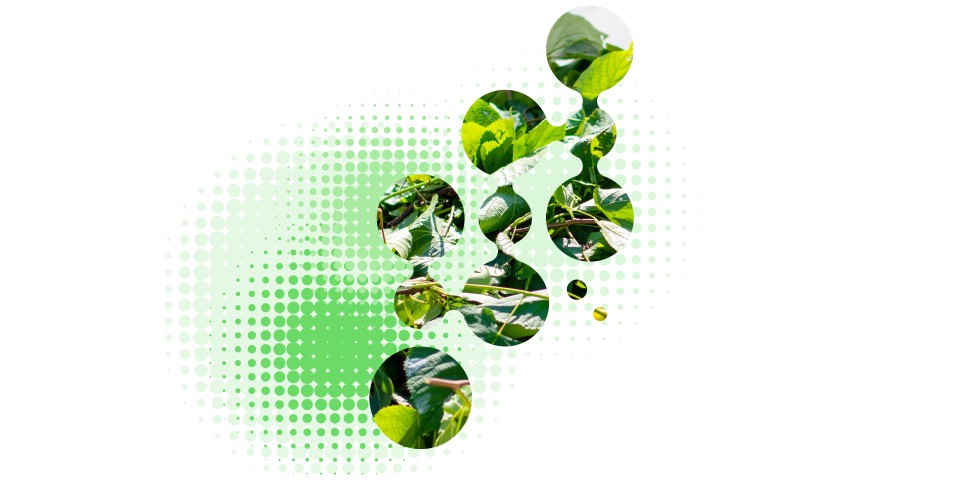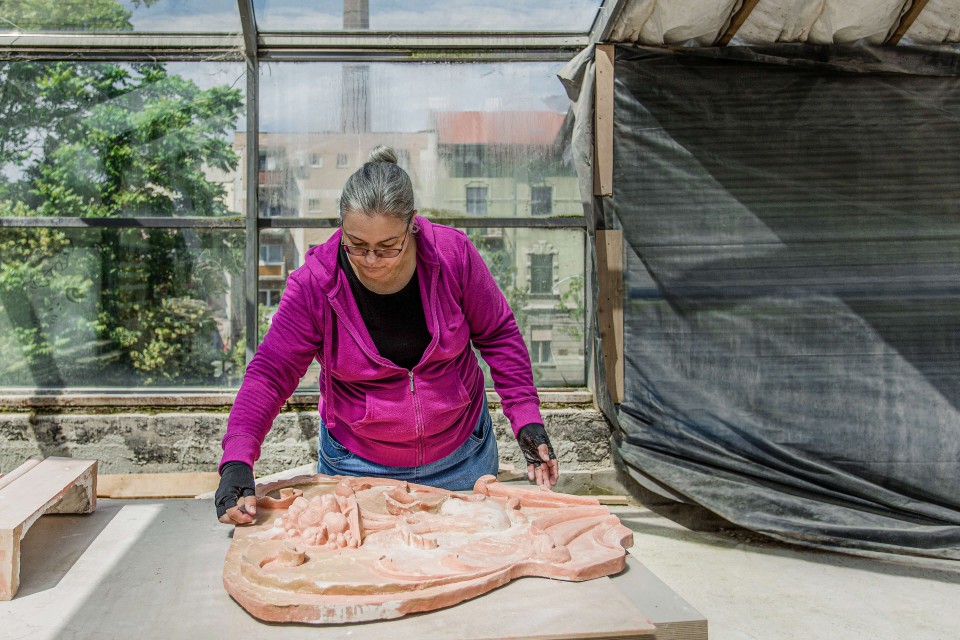
Past splendor: the interior of the casino, which was built in 1872
Oct 01, 2019 Read time: approx. MinutesMinute
Restoring the original
Using WACKER silicone rubber, restorers make molds of the opulent ornaments in the Arad Old Casino in order to replace damaged pieces with identical copies of the originals. The restoration work is giving back to this western Romanian city a place fondly remembered by many of its inhabitants.
As a mural painting restorer, Annamaria Baciu spent a few months in Florence restoring frescoes painted by the famous medieval artist, Giotto. Afterward, she returned home to Romania, and has spent the last four years in Arad, a city of 160,000 inhabitants located in western Romania on the Hungarian border. “The casino we’re working on at the moment is by no means a Giotto,” she says, explaining that it is a protected historical monument and is on the list of important local heritage sites. “Nevertheless, this place is more important than Giotto to the people of Arad.”
“The Old Casino used to be the most popular spot in Arad,” continued Baciu. “In summer, families sipped lemonade and beer on the terrace; in winter, there was an ice rink in front of the casino and it was also used as a venue for many weddings.”
Arad is located in the very west of Romania, on the Hungarian border.
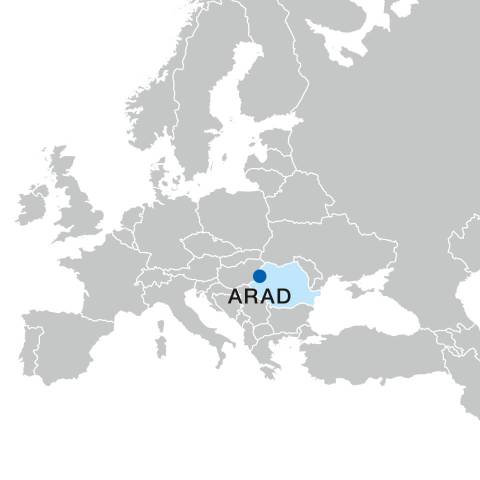
Habsburg heyday
Situated on the Mures River, the neo-Baroque Old Casino, which dates back to 1872, is surrounded by beautiful historical buildings testifying to the city’s heyday in the 19th century. Back then, during the rule of the House of Habsburg, Arad was home to Romanians, Hungarians, Germans, Serbs and Jews, who whiled away their time in the casino playing roulette and cards. During the Communist era, the building housed a bar.
After the political revolution of 1989, the building became increasingly dilapidated. The tenants operating a Chinese restaurant on the upper floor for several years lacked sensitivity in their treatment of the neo-Baroque stucco ornamentation.
“The Old Casino changed owners many times. Some were good, others less so,” noted Baciu. In the end, it was sold at a public auction to an Arad-based entrepreneur, the owner of Arsat Industrie, a company manufacturing aerospace components and other goods. He wished to give back to his home town the building that occupies a special place in the memories of Arad residents – so, he commissioned Baciu to restore the historic fabric of the building. There are plans to use the building as a venue for events, with splendid areas being available for hire by both businesses and private parties.
The restorers carefully remove the many layers of the past decades to reveal the original fabric of the building.

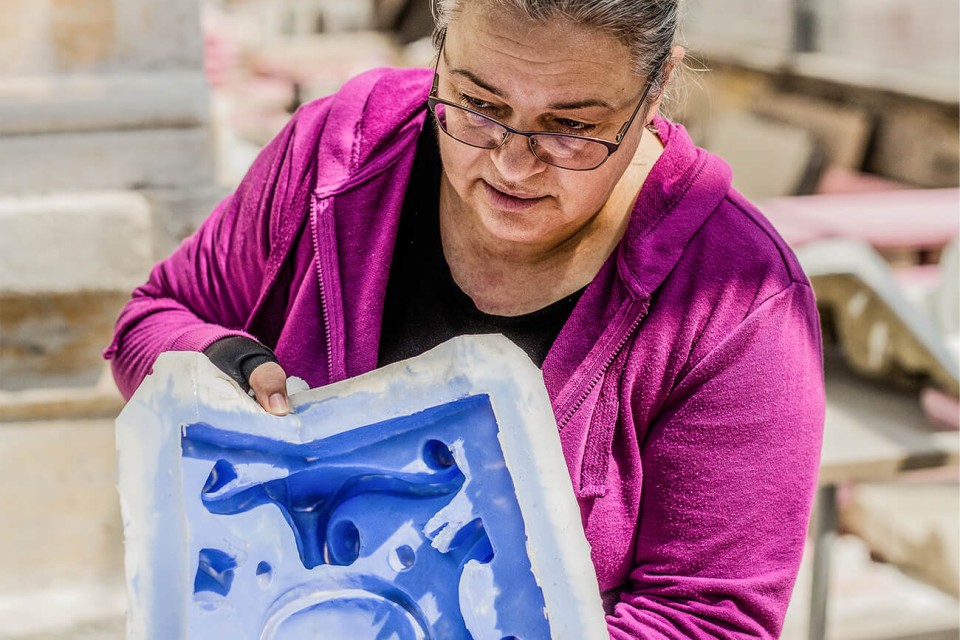
A restoration specialist
Historical buildings are in the best of hands with Professor Baciu. She studied art history and has given lectures on restoration methods at the most important Romanian universities – in Bucharest and Cluj-Napoca – for 25 years. She is hailed at home and abroad as an eminent mural painting restoration specialist. Since early 2019, her team of restorers has been removing the various layers that were added to the original Old Casino in the past 150 years. On the eastern facade, for example, there were between five and eight coats of paint – and even more of them closer to the river because the humidity is higher there, causing the paint to deteriorate faster. All kinds of different colors and materials were used on the ceiling and the interiors: orange, white and green; gypsum, concrete and cement, plastics and a host of other materials.
Annamaria Baciu with a negative mold made from silicone. The material perfectly renders even the smallest details of the original, enabling copies of the highest quality to be made.
“None were true to the original, none of the work was professional,” says Annamaria Baciu. The past hundred years – the world wars, the economic instability of the inter-war period, 40 years of Communist rule and finally the sudden adoption of a market economy with its many new and not always suitable materials – have left their mark on the Arad casino. “We are freeing the original from an assortment of layers comprising different materials dating back to various periods and are transporting the architect’s design into our day and age,” she explains.
A wealth of ornamentation
Typically, the neo-Baroque style features a wealth of exuberant ornamentation both inside and out. The restorers generally strive to be faithful to the principles of historic monument conservation – to retain as much of the original building fabric as possible.
Their guiding principle “primum non nocere” – first, do no harm – is similar to the Hippocratic Oath, says Baciu. “It only takes a few seconds to destroy centuries.” Carefully, the art historian strokes an ornamental sun on the wall from which parts have broken off. “Many of the ornaments are damaged,” she says. Some 20 percent of the fabric must be replaced. This is where WACKER comes into play.
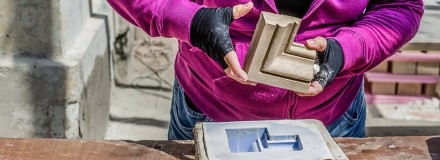
As it is so elastic, the blue silicone mold is placed in a gray support mold made of concrete or gypsum so that a copy can be made.

Cautiously, the restorers remove intact ornaments – capitals with plant motifs, small pillars, stucco flowers – from the facade, the ceiling and the interior walls. Then a negative mold is made from WACKER silicone rubber. This mold is used to make an identical copy with the original material.

500 kilograms needed
Baciu and her team use ELASTOSIL® M 4600 and 4630 to make the molds. These two-component, pourable, addition-curing silicone rubber grades cure at room temperature. The curing process begins as soon as the A and B components are mixed. Baciu’s team needs around 500 kilograms of this material for the casino. If the mold is made on a vertical surface, WACKER’s Stabilizer 43 can be added to make the rubber compound sag resistant. The products were supplied by Contras, WACKER’s local partner.
“I used different materials at other locations. But with silicone, it was love at first sight. It is easy to mix, easy to use, feels good and accurately reproduces the details on the original.”
Prof. Annamaria Baciu
She feels it’s important that the mold replicates the marks left on the original by the passage of time – little scratches, tiny signs of breakage – so that the copy is authentic and doesn’t look like a brand new item from a DIY store. The restorers use a brush and trowel to apply the still-viscous silicone rubber to the original ornamental sun. White silicone is used for the first step, followed by a blue coat, and finally, to finish off, another white coat is applied.
“We work with colored silicone so that the different coats are visible,” she explains. She sets aside an entire day for drying, to be on the safe side. Then the mold is ready. One advantage silicones have over polyurethane elastomers, which are also used in moldmaking, is that they don’t need release agents. Even without these additives, the negative mold can easily be removed from the original. Release agents are undesirable in the moldmaking process because they leave stains and destroy the water equilibrium of the replica.
Generally, making and drying the negative mold takes three days. Then a so-called support mold is made. This second – hard – mold is needed to stabilize the first – elastic – silicone rubber mold. The restorers make the support mold out of gypsum, concrete or epoxy resin, as required. They have even experimented with polyurethane foam.
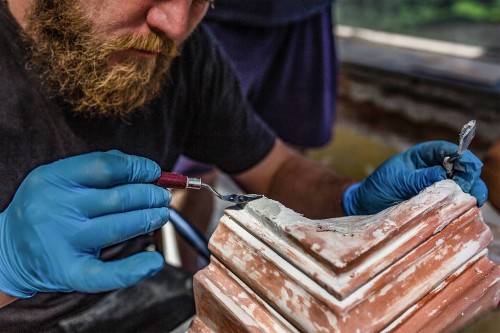
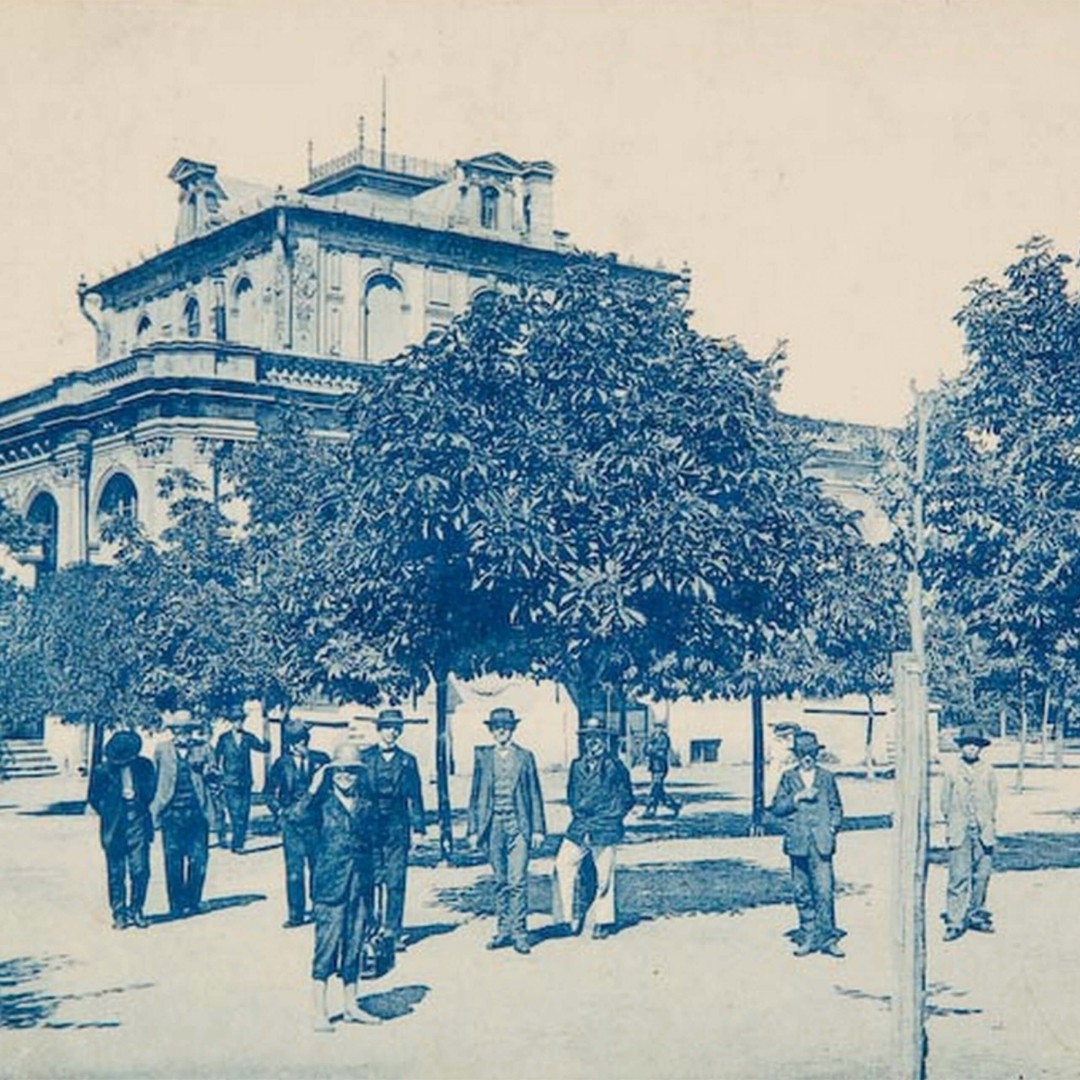
Arad, a city of 160,000 inhabitants, is located in the very west of Romania, on the Hungarian border. The Old Casino, which dates back to 1872, is still one of its attractions.
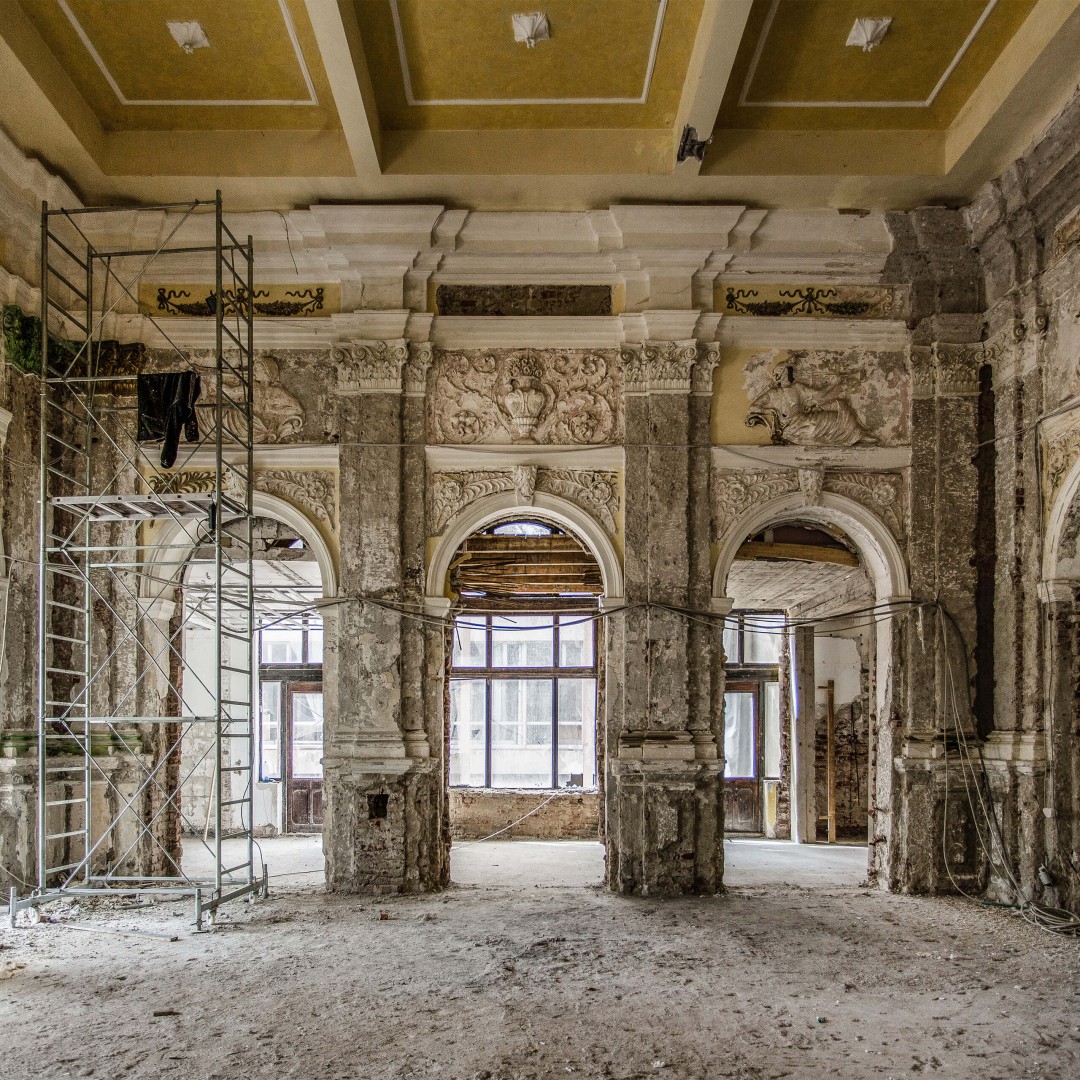
Past splendor: view of the interior of the casino, which was built in 1872.
Replicas made of roman cement
Many original ornamental elements are made of Italian stucco, a mixture of gypsum, clay and sand in various ratios; some of the pillars in the facade were terracotta. Baciu is having the replicas made from Roman cement, although the word cement is not meant literally. Rather, it is a traditional building material made of clay, sand and lime mortar with various additives. While the restorers are making a copy of a small pillar in the silicone mold, they add straw to the Roman cement – this too is a traditional artisanal technique to increase the strength of a structural part.
In Arad, the restorers use neither genuine cement nor other modern building materials. “Often, the compatibility of the newly applied coat and the original stone substrate is problematic,” she notes. Her team experiments a lot and develops its own mixtures. “Restoration work,” she says “is never-ending research.”
The team plans to complete its work by the fall, then the interior can be transformed into a modern event center. “Some couples in Arad have especially postponed their wedding until we have finished,” says Baciu laughing. “So we ’d better hurry.”
Silicone rubber for architectural moldmaking
Besides applications in the field of restoration, WACKER silicone rubber compounds are used to manufacture new building elements. Accurate detailed molds can be made of even complex structures and surfaces with ELASTOSIL® M. These structures can then be reproduced using concrete, artificial stone or gypsum. The silicone rubber molds have good alkaline hydrolysis resistance and thanks to their long-term stability, a high number of castings can be achieved. Our addition-curing ELASTOSIL® M products are the industry benchmark in this field.
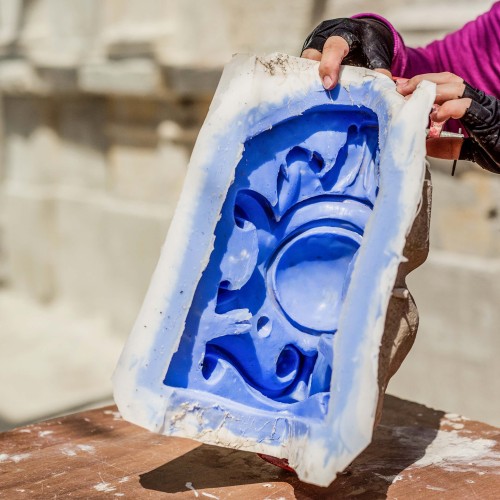
Advantages:
- High dimensional stability/non-shrink properties
- No release agent needed
- High number of castings for concrete, artificial stone or gypsum
Applications:
- Facade and decorative elements
- Indoor and outdoor facing bricks
- Dies for “stamping” concrete
- Curb stones and paving slabs
Mrs. Andrea Bogner
Senior Marketing Manager
Industrial Solutions WACKER SILICONES
+49 89 6279-1375
andrea.bogner@wacker.com

